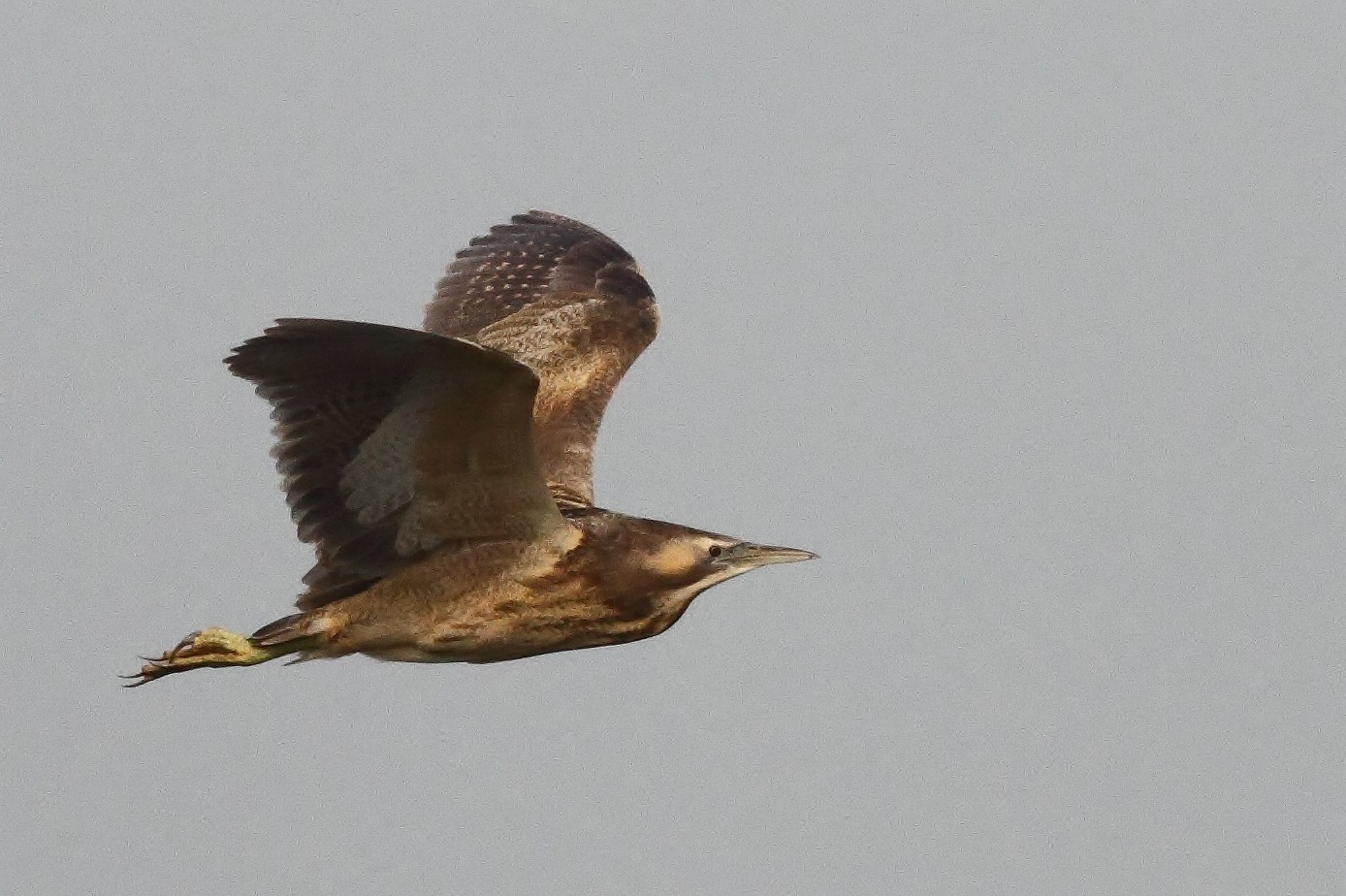Australasian Bittern
A species of Large bitterns Scientific name : Botaurus poiciloptilus Genus : Large bitterns
Australasian Bittern, A species of Large bitterns
Botanical name: Botaurus poiciloptilus
Genus: Large bitterns
Content
Description General Info
Description
The length is from 650 to 750 mm with adults being similar between the sexes while the male is significantly larger. The bird has a deep brown upper surface, mauled with buff on wing coverts; face and eyebrow buff, with dark brown stripe running from bill to erectile plumes at sides of neck. Under surface buff, striped with brown. The face skin is a dull green as are the legs and feet, it possesses a dark brown bill, yellow eyes, and the base of the lower mandible is green-yellow. 
Size
76 cm
Colors
Brown
Nest Placement
Ground
Feeding Habits
Australasian Bittern consumes a range of aquatic animals, including frogs, eels, and freshwater crustaceans, exploiting unique dietary adaptations to forage stealthily among wetland vegetation.
Habitat
Australasian Bittern typically resides in dense, vegetation-rich wetlands encompassing reeds, sedges, rushes, and cat tails. This species favors ecosystems with stable, shallow waters like river margins, pools, lakes, and swamps. It adapts to various environments, including wet grasslands, rice fields, and sometimes mangroves, preferring freshwater habitats but can also be found in brackish environments such as lagoons and estuaries. Australasian Bittern generally avoids coastal areas and open landscapes, and is known to inhabit areas up to 300 meters in elevation.
Dite type
Piscivorous
General Info
Feeding Habits
Bird food type
Behavior
It feeds on aquatic animals such as frogs, eels and freshwater crustaceans. It is a solitary nester on the ground in dense wetland vegetation on trampled reeds and other plants. Monitoring of this species mainly relies upon the ability to count males based on the conspicuous breeding calls of males. Detailed analyses showed that the best time to detect Australasian Bitterns was 1 hour before sunrise, in September (austral spring), on a moonlit night with no cloud or rain. 
Distribution Area
It is found in south-western and south-eastern Australia, Tasmania, New Zealand, New Caledonia and Ouvea. Populations in Australia and New Zealand have declined in the 20th century. It is a cryptic and partly nocturnal species that inhabits densely vegetated wetlands. 
Species Status
The principal cause of past and present decline is thought to be wetland drainage and degradation. In Australia it is thought to be particularly sensitive to the destruction of drought refugia. It is listed as endangered on the Environment Protection and Biodiversity Conservation Act 1999. It is listed as threatened on the Victorian Flora and Fauna Guarantee Act of 1988. Under this act, an Action Statement for the recovery and future management of this species has not been prepared. On the 2007 advisory list of threatened vertebrate fauna in Victoria, this species is listed as endangered. 
Scientific Classification
Phylum
Chordates Class
Birds Order
Pelicans and Relatives Family
Herons Genus
Large bitterns Species
Australasian Bittern 